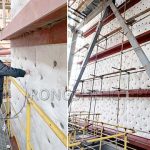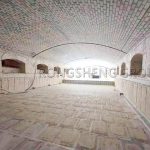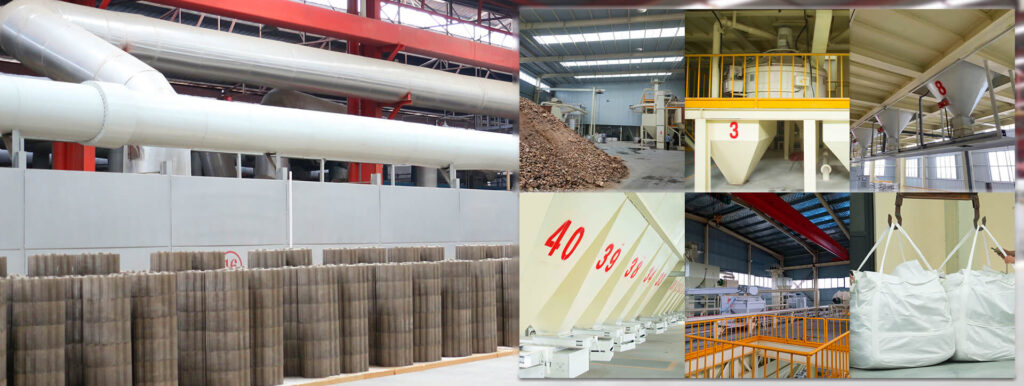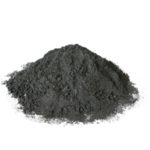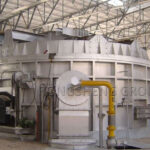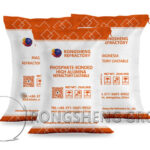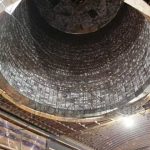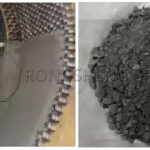Basic refractories feature high refractory properties, high-temperature strength, and resistance to alkaline slag corrosion. They are used in industries such as chemicals, petroleum, silicates, machinery manufacturing, and power generation. They are particularly widely used as auxiliary materials in the metallurgical industry. Common basic refractories include magnesia bricks, magnesia-chrome refractories, periclase-spinel refractories, periclase-ferroalumina-spinel refractories, and dolomite. What are the raw materials used for these basic products?
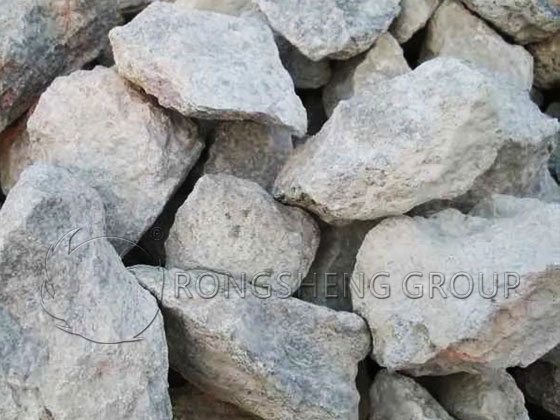
-
Magnesite Ore
Magnesite is a magnesium carbonate with the chemical formula magnesium carbonate (MgCO₃). Its theoretical composition is 47.8% MgO and 52.2% CO₂. It is white, light gray, light yellow, or brown in color. Magnesite, dolomite, and calcite belong to a family of similar minerals. A quick way to distinguish them is to observe their reactions with dilute hydrochloric acid. Calcite foams and dissolves violently in dilute hydrochloric acid; dolomite foams and dissolves slowly in dilute hydrochloric acid; magnesite does not foam in cold dilute hydrochloric acid but dissolves in hot acid.
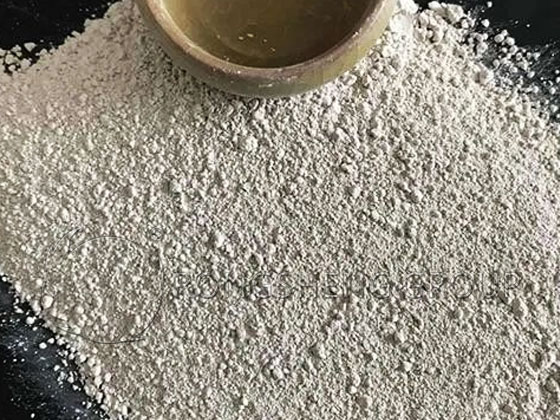
-
Light-burned Magnesium Powder
Light-burned magnesium powder is produced by sintering magnesite with a MgO content of approximately 47% in a reverberatory kiln. Magnesium carbonate (MgCO₃) is lightly calcined at 800-1000°C to release CO₂, forming MgO. The solid MgO is ground into a powder to form light-burned magnesium powder. Light-burned magnesia is primarily used to make cementitious materials, thermal and sound-insulating building materials, and ceramic raw materials. It is also an ideal raw material for producing high-density magnesia.
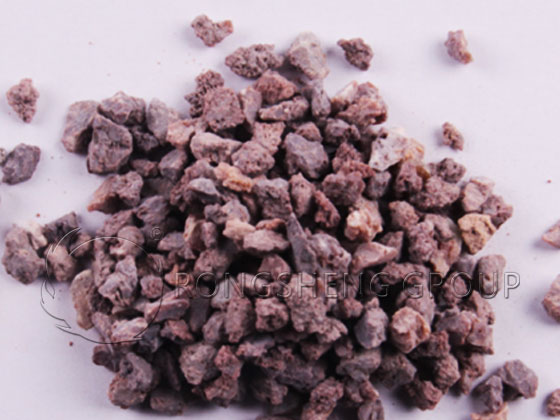
-
Deadburned Magnesia
Deadburned magnesia is made from magnesite with MgO content ≥46%. It is calcined in a high-temperature shaft kiln to 1400-1800°C. At this point, the magnesium carbonate (MgCO₃) is completely decomposed, resulting in a hard, reddish-brown deadburned magnesia. Deadburned magnesia is primarily used as a refractory material for steelmaking furnace linings. It is also used to make refractory products such as calcium-magnesia bricks, magnesia-carbon bricks, magnesia-alumina bricks, magnesia-chrome bricks, forsterite bricks, and magnesia-silica bricks.
-
Mid-grade Magnesia
Mid-grade magnesia is produced from light-burned magnesia powder with a MgO content of 95%-97%. It is produced through processes such as briquetting and high-temperature shaft kiln calcination. This product features excellent sintering and dense crystals, making it a high-quality raw material for producing magnesia products.
-
Magnesia-Calcium Sand
Magnesia-Calcium Sand is made by mixing high-calcium magnesite, high-silicon magnesite, dolomite, and other raw materials using a synthetic process. The process involves batching, grinding into pellets, and calcining. Magnesia-Calcium Sand has high refractoriness and is the primary raw material for magnesia-calcium bricks. It is primarily used in the production of refractory bricks for stainless steel ladles.
-
High-Purity Magnesia Sand
High-purity magnesia sand is made from natural, premium-grade magnesia ore, purified by flotation, then lightly calcined, finely ground, pelletized, and calcined in an ultra-high-temperature shaft kiln. It is commonly used in the production of magnesia-based monolithic refractory materials.
-
Fused Magnesia
Fused magnesia is typically produced by submerged arc smelting natural high-quality magnesite, light-burned magnesia, and seawater magnesia in a three-phase electric arc furnace. It features high purity, a high melting point, large crystal grains, a dense structure, strong slag and erosion resistance, and excellent chemical stability. It is a high-quality alkaline magnesia refractory material and an excellent high-temperature electrical insulation material.
Basic Refractories for High-Temperature Industrial Furnaces
In the complex corrosive environments of high-temperature industries, basic refractories, due to their excellent resistance to alkaline slag, have become core lining materials in steel and non-ferrous metallurgy. These materials, primarily composed of basic oxides such as magnesium oxide (MgO) and calcium oxide (CaO), ensure reliable operation of key equipment such as blast furnaces, converters, and electric furnaces under the continuous corrosive conditions of high-temperature slag.
Definition and Chemical Composition of Basic Refractories
Basic refractories are refractory materials primarily composed of magnesium oxide (MgO content typically ≥80%), calcium oxide (CaO content typically ≥50%), or a combination of the two. Key varieties include magnesia, dolomite, magnesia-chromium, and magnesia-alumina spinel. Its mineral composition is mainly composed of periclase (MgO) and calcium (CaO) as the main crystal phases, often supplemented by composite mineral phases such as spinel (MgAl₂O₄) and magnesium chromium spinel (MgCr₂O₄), which together constitute its performance system of resistance to high temperature and alkaline slag corrosion.
Core Performance Advantages of Basic Refractories
Excellent Resistance to Alkaline Slag Attack: They exhibit excellent chemical stability against FeO- and CaO-rich alkaline slags, such as blast furnace slag and molten steel slag, and possess strong resistance to chemical attack.
High Refractoriness and Refractoriness Under Load: Basic refractories generally have high refractoriness. According to national standards (such as GB/T7322-2017), the refractoriness under load (ROL) of common basic products typically ranges from 1550°C to 1600°C. High-performance products, such as magnesia-alumina spinel bricks, high-purity magnesia bricks, and directly bonded magnesia-chrome bricks, can achieve ROLs exceeding 1700°C; semi-rebonded and rebonded magnesia-chrome bricks can reach 1750°C to 1800°C.
Excellent Thermal Shock Stability (Select Varieties): By incorporating a spinel phase, the thermal shock stability of some basic refractories, such as magnesia-alumina spinel bricks, is significantly improved, enabling them to better withstand thermal stresses caused by rapid temperature fluctuations and reducing the risk of cracking.
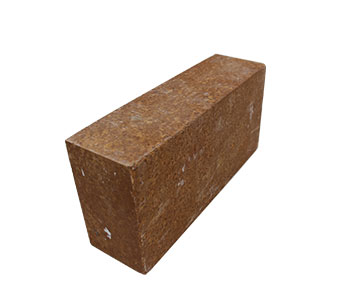
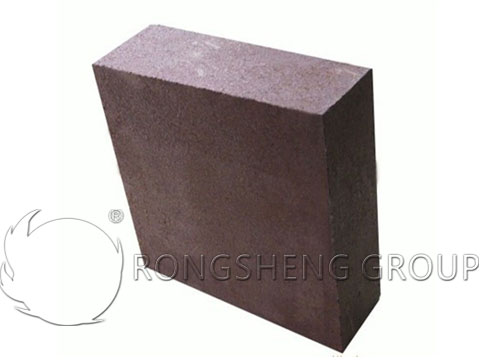
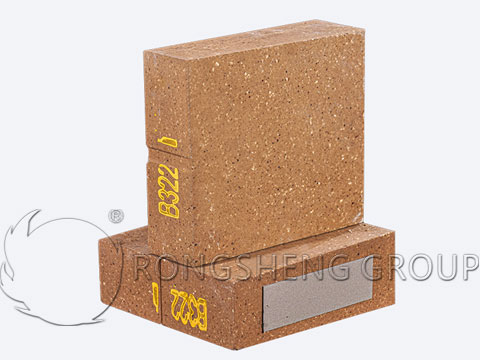
Main Types and Typical Applications of Basic Refractories
Magnesia Bricks (MgO ≥ 85%)
- Composition and Structure: Made from sintered or fused magnesia, the primary crystal phase is periclase, with a small amount of silicate binder.
- Characteristics: High refractoriness and excellent resistance to alkaline slag corrosion.
- Applications:
- Steel Industry: Blast furnace hearth and hearth (to withstand the static pressure of molten iron and alkaline slag corrosion); converter linings (especially critical areas of the slag splashing protection process).
- Non-ferrous Metals Industry: Slag lines in nickel, copper, and other metal smelting furnaces to resist corrosion from high-concentration alkaline slag.
Magnesia-Chrome Bricks (MgO-Cr₂O₃ Bricks)
- Composition: MgO content is typically between 60% and 80%, and Cr₂O₃ content is between 10% and 25%. The primary mineral phase is a magnesia-chrome spinel solid solution, exhibiting excellent high-temperature strength.
- Performance: With a softening temperature generally above 1550°C, these bricks offer excellent resistance to iron oxide slag and copper smelting slag. They are widely used in cement rotary kilns, glass kiln regenerators, steelmaking furnace linings, permanent linings for refined steel ladles, nonferrous metallurgical furnaces, and lime kilns.
Magnesia-Alumina Spinel Bricks (MgO-MgAl₂O₄ Bricks)
- Performance Advantages: The spinel phase (typically 20%-40%) helps reduce the material’s thermal expansion coefficient, significantly improving resistance to thermal shock cycles while maintaining excellent resistance to alkaline slag.
- Applications:
- Steel Industry: The upper and middle sections of blast furnace shafts (temperature fluctuation areas) and the water-cooling tube wrapping of heating furnaces.
Basic refractories are a key material for resisting slag corrosion in high-temperature industries. From traditional magnesia bricks to composite magnesia-chrome bricks, material innovation and process advancements continue to drive performance improvements. For the refractory industry, a deep understanding of the needs of specific sectors and strengthening green manufacturing capabilities are key to seizing development opportunities. In high-temperature industrial equipment, the reliability and stability of refractory performance are directly related to the efficiency and safe operation of production systems.
Rongsheng Refractory Materials Manufacturer provides high-quality basic refractories for high-temperature industrial furnaces. Contact Rongsheng for free samples and quotes.

